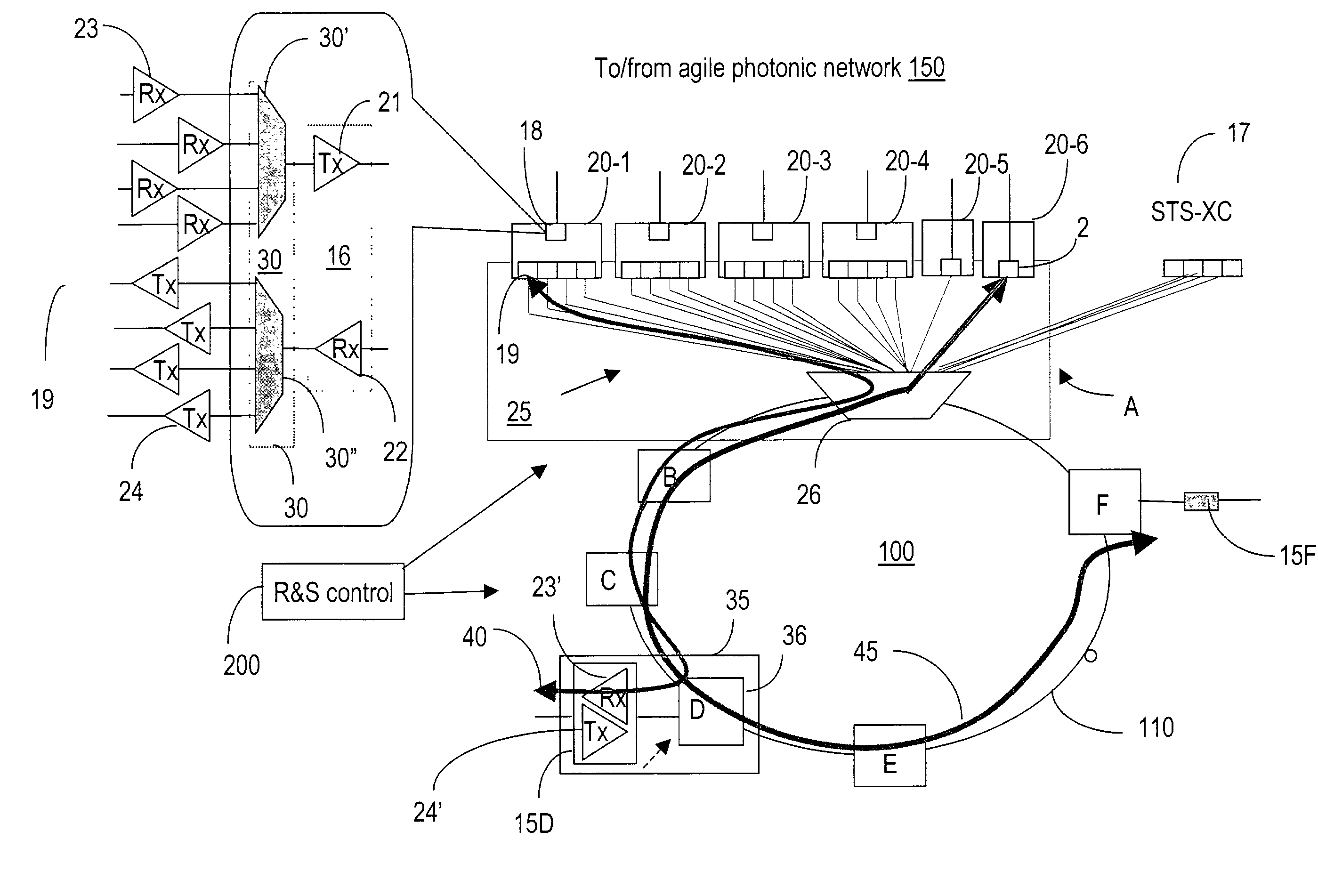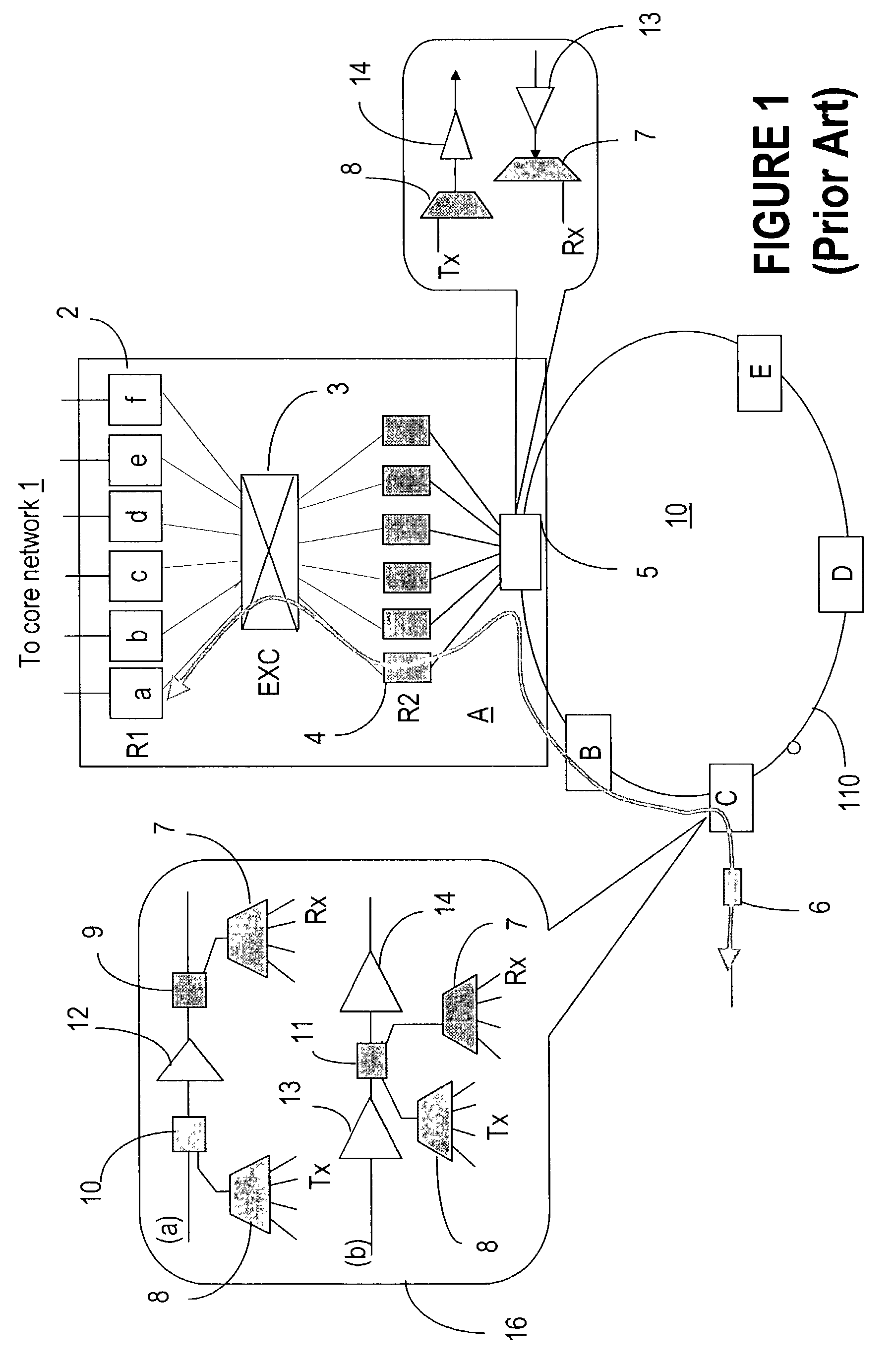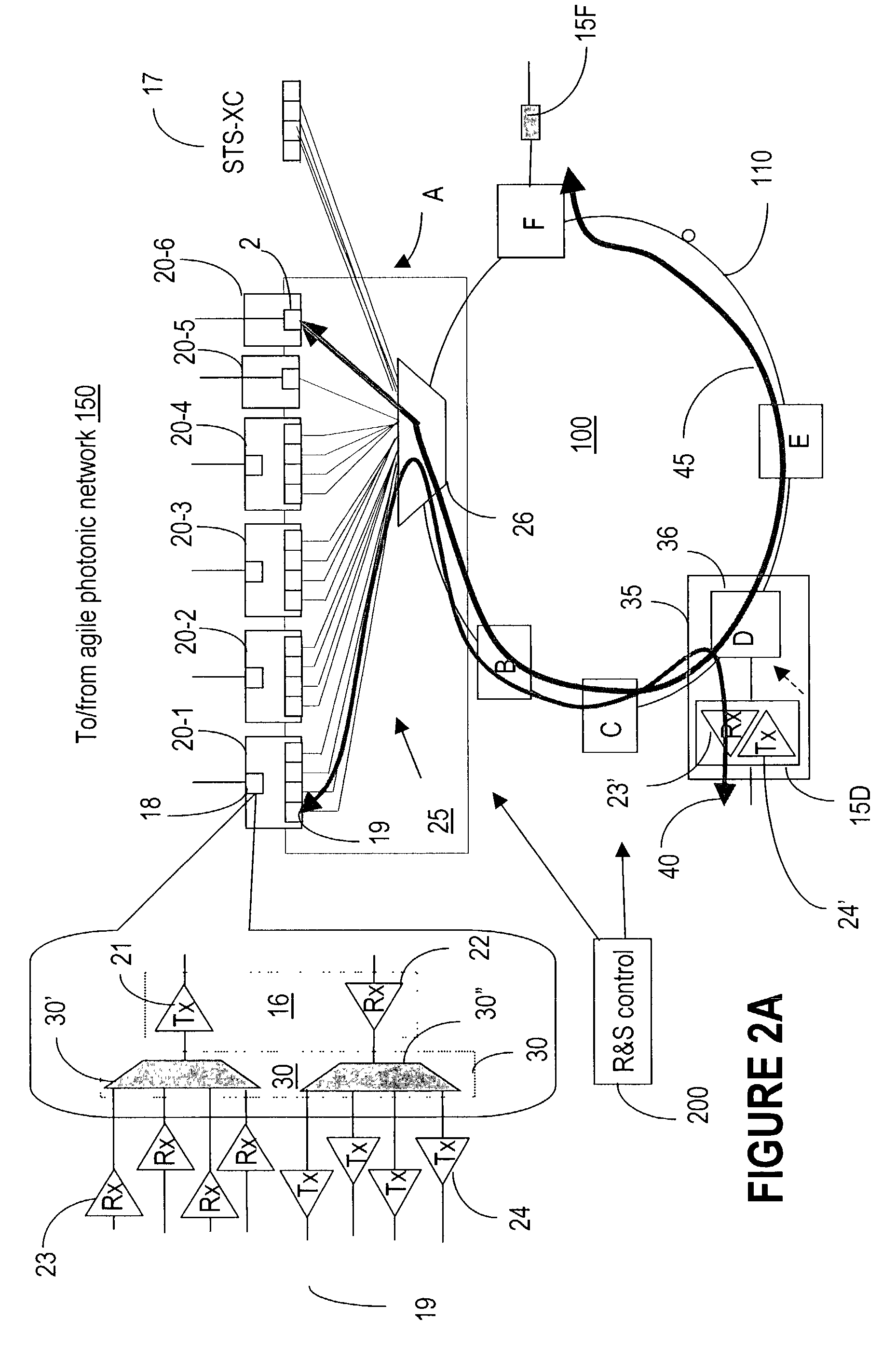Wavelength routing on an optical metro network subtended off an agile core optical network
a technology of agile core and metro network, applied in the field of optical telecommunications networks, can solve the problems of reducing the complexity of nodes, reducing the flexibility of operation, and reducing the cost of solutions currently prohibitiv
- Summary
- Abstract
- Description
- Claims
- Application Information
AI Technical Summary
Benefits of technology
Problems solved by technology
Method used
Image
Examples
Embodiment Construction
[0027]FIG. 1 shows the conventional configuration of a metro ring network 10 subtended off a dense WDM (DWDM) core network 1. FIG. 1 shows core transponders 2 that perform O / E (optical-to-electrical) or E / O conversion of the core (high-speed) channels carrying traffic on network 1. Transponders 2 could be for example 10 Gb / s transponders; they are also called long reach (LR) transponders. Metro transponders 4 terminate the metro (lower speed) channels carrying traffic on the metro network 10. Transponders 4 could be for example 2.5 Gb / s transponders; they are also called short reach (SR) transponders. In the general case transponders 2 operate at rate R1 and transponders 4 operate at rate R2. For example, in typical networks deployed today, the ratio between the core and metro rates is R1 / R2=4.
[0028]Metro network 10 includes nodes A to E in this example, where node A, which connects metro network 10 with core network 1 is called a hub node and nodes B to E are edge nodes. The edge n...
PUM
 Login to View More
Login to View More Abstract
Description
Claims
Application Information
 Login to View More
Login to View More - R&D
- Intellectual Property
- Life Sciences
- Materials
- Tech Scout
- Unparalleled Data Quality
- Higher Quality Content
- 60% Fewer Hallucinations
Browse by: Latest US Patents, China's latest patents, Technical Efficacy Thesaurus, Application Domain, Technology Topic, Popular Technical Reports.
© 2025 PatSnap. All rights reserved.Legal|Privacy policy|Modern Slavery Act Transparency Statement|Sitemap|About US| Contact US: help@patsnap.com



